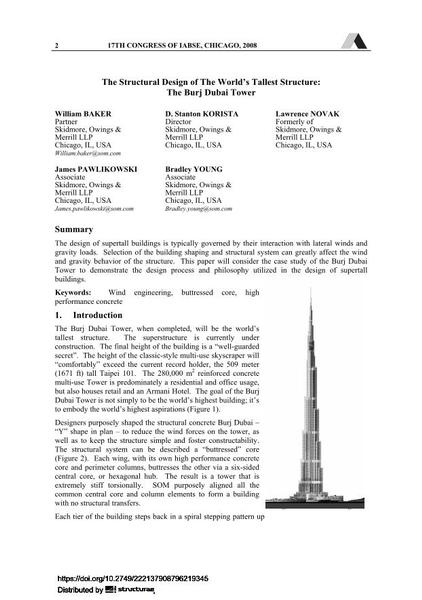The Structural Design of The World’s Tallest Structure: The Burj Dubai Tower

|
|
|||||||||||
Bibliographic Details
| Author(s): |
William Baker
(Skidmore Owings & Merrill)
D. Stanton Korista Lawrence Novak James Pawlikowski Bradley Young |
||||
|---|---|---|---|---|---|
| Medium: | conference paper | ||||
| Language(s): | English | ||||
| Conference: | 17th IABSE Congress: Creating and Renewing Urban Structures – Tall Buildings, Bridges and Infrastructure, Chicago, USA, 17-19 September 2008 | ||||
| Published in: | IABSE Congress Chicago 2008 | ||||
|
|||||
| Page(s): | 2-9 | ||||
| Total no. of pages: | 8 | ||||
| Year: | 2008 | ||||
| DOI: | 10.2749/222137908796219345 | ||||
| Abstract: |
The design of supertall buildings is typically governed by their interaction with lateral winds and gravity loads. Selection of the building shaping and structural system can greatly affect the wind and gravity behavior of the structure. This paper will consider the case study of the Burj Dubai Tower to demonstrate the design process and philosophy utilized in the design of supertall buildings. |
||||
| Keywords: |
high performance concretes HPCs wind engineering buttressed core
|
||||
